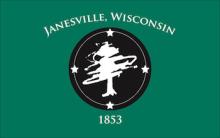Schools In Janesville, Wisconsin, To Save Big With Fiber Network
As schools across the country look at their budgets, Janesville, Wisconsin, has decided to cut their future expenses with a fiber optic investment. This spring, the district will use E-rate funding to help finance a fiber optic local area network (LAN) in order to cut telecommunications costs by $70,000 per year.
Connecting Facilities
The school district will install 12 lines, eliminating leased lines and the associated expense. E-rate funds will pay for $1.6 million of the estimated $2 million project; the school district’s contribution will be approximately $400,700 and an additional $225,000 for engineering and project fees. School district officials calculate their contribution will be paid for in nine years. Fiber optic networks have life expectancies upwards of 20 years and in Janesville, District CIO Robert Smiley estimates this project will last for 50 years.
At a recent Board meeting, Smiley told the members that the new network will be like transitioning “to our own private Interstate.” In addition to better prices, the new infrastructure will allow the district to ramp up speeds to ten times what they current share between facilities. The system Janesville School District uses now has been in place since the 1990s.
The federal E-rate program started during the Clinton administration as a way to help schools fund Internet access and has since been expanded to allow schools to use if for infrastructure. School districts obtain funding based on the number of students in a district that are eligible for the National School Lunch Program. Funding for E-rate comes from the School and Libraries Program from the Universal Services Fund.
“Hello, Savings!”
Like many other schools that have chosen to switch to a district owned fiber network, Janesville sees a big advantage for voice communications. Due to the age of their phone system, they’ve had failures in the past. Last winter during a day of inclement weather, a large volume of incoming calls from parents overloaded the system and other parents who had signed up for emergency alerts on their phones didn’t receive them. With a new fiber network, the school district will be able to switch to VoIP.



